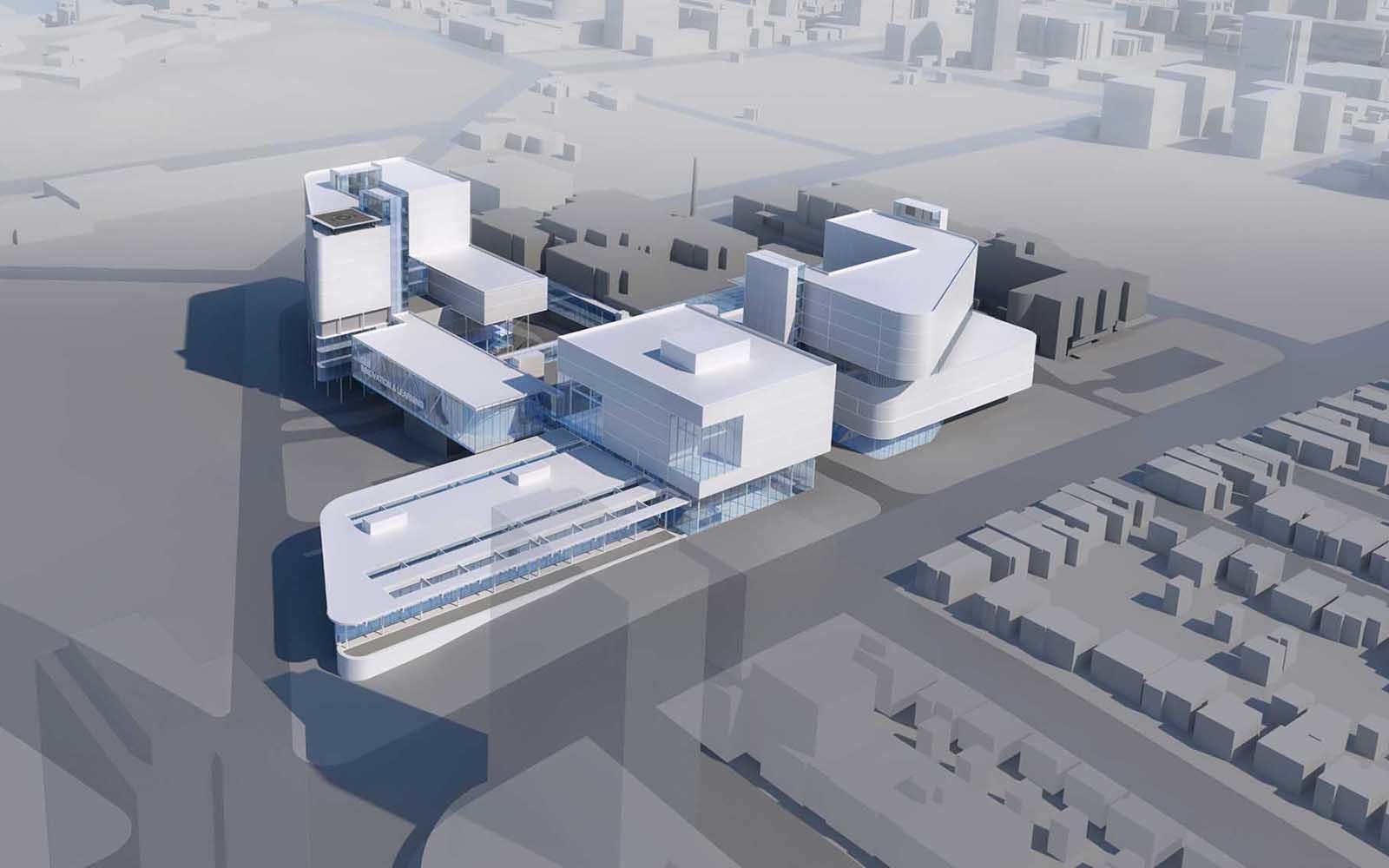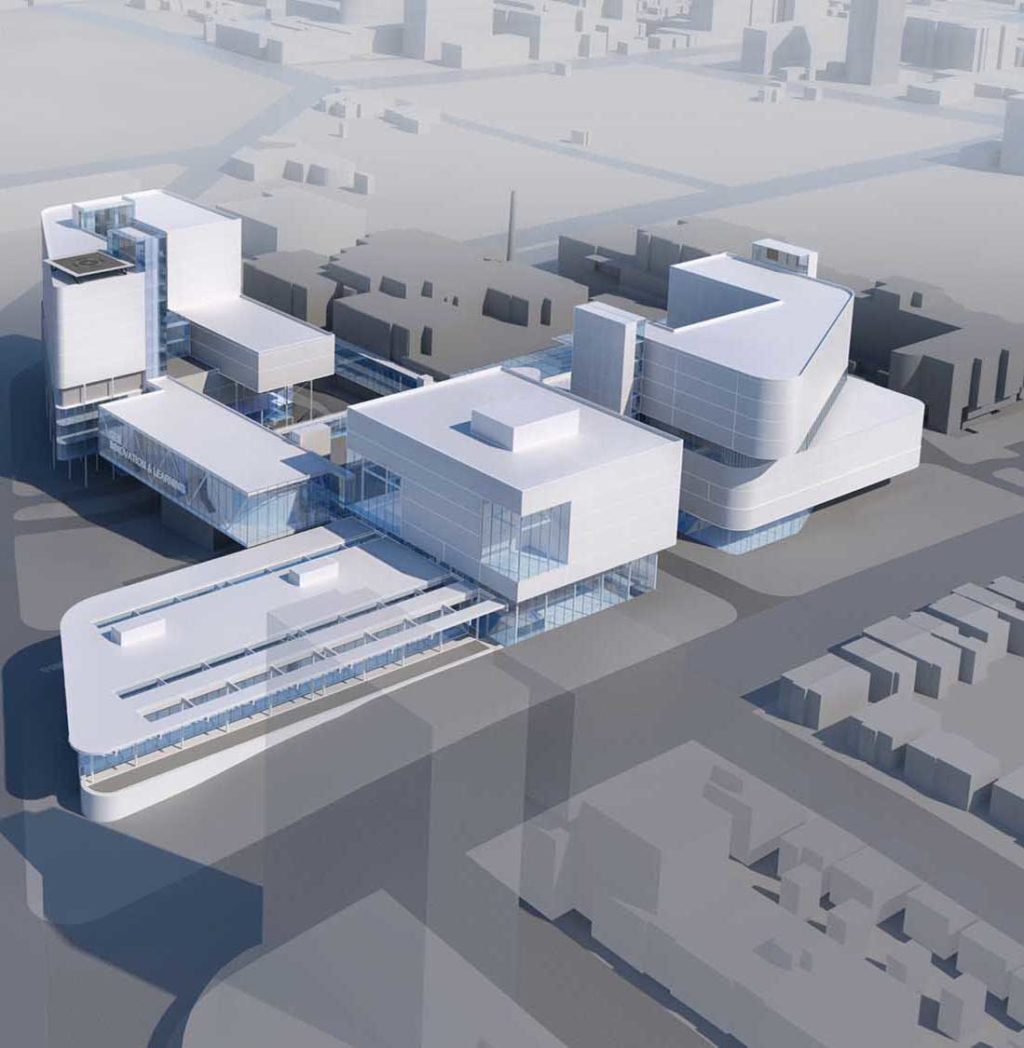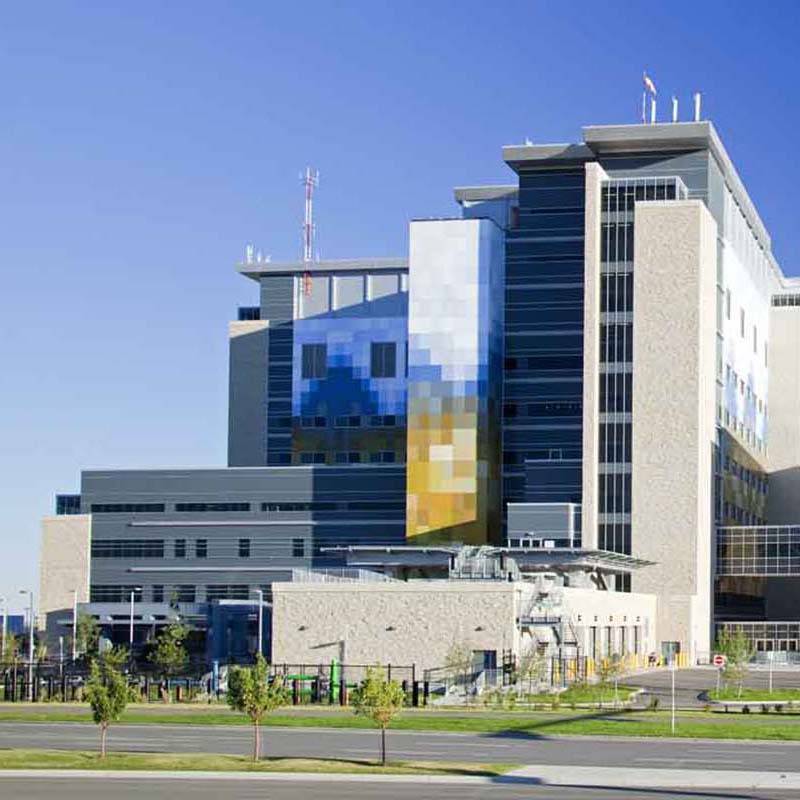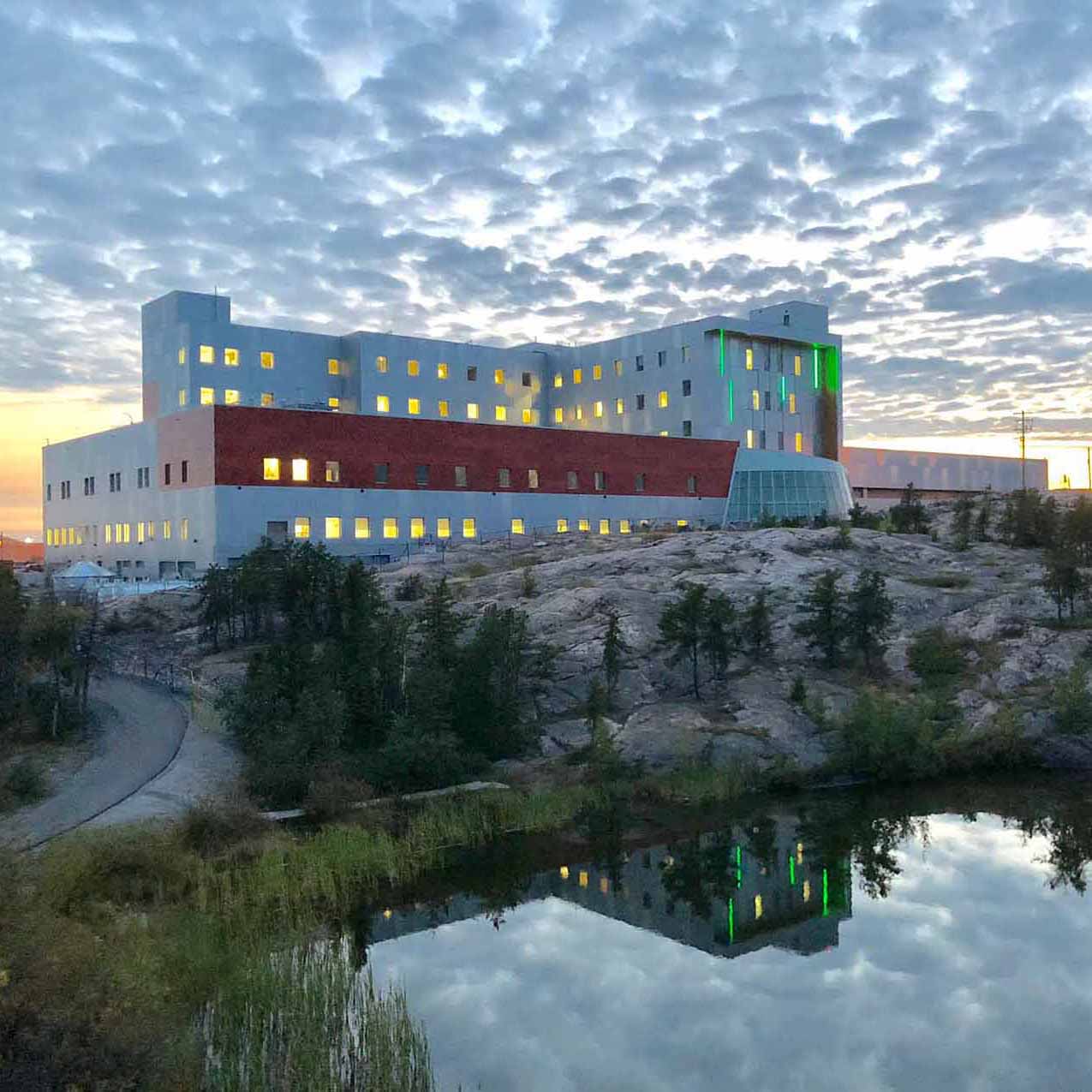Year Completed
2020
Client
DTIR and NSHA
Location
Halifax, NS
Construction value
$2 B
Size
1,700,000 SF
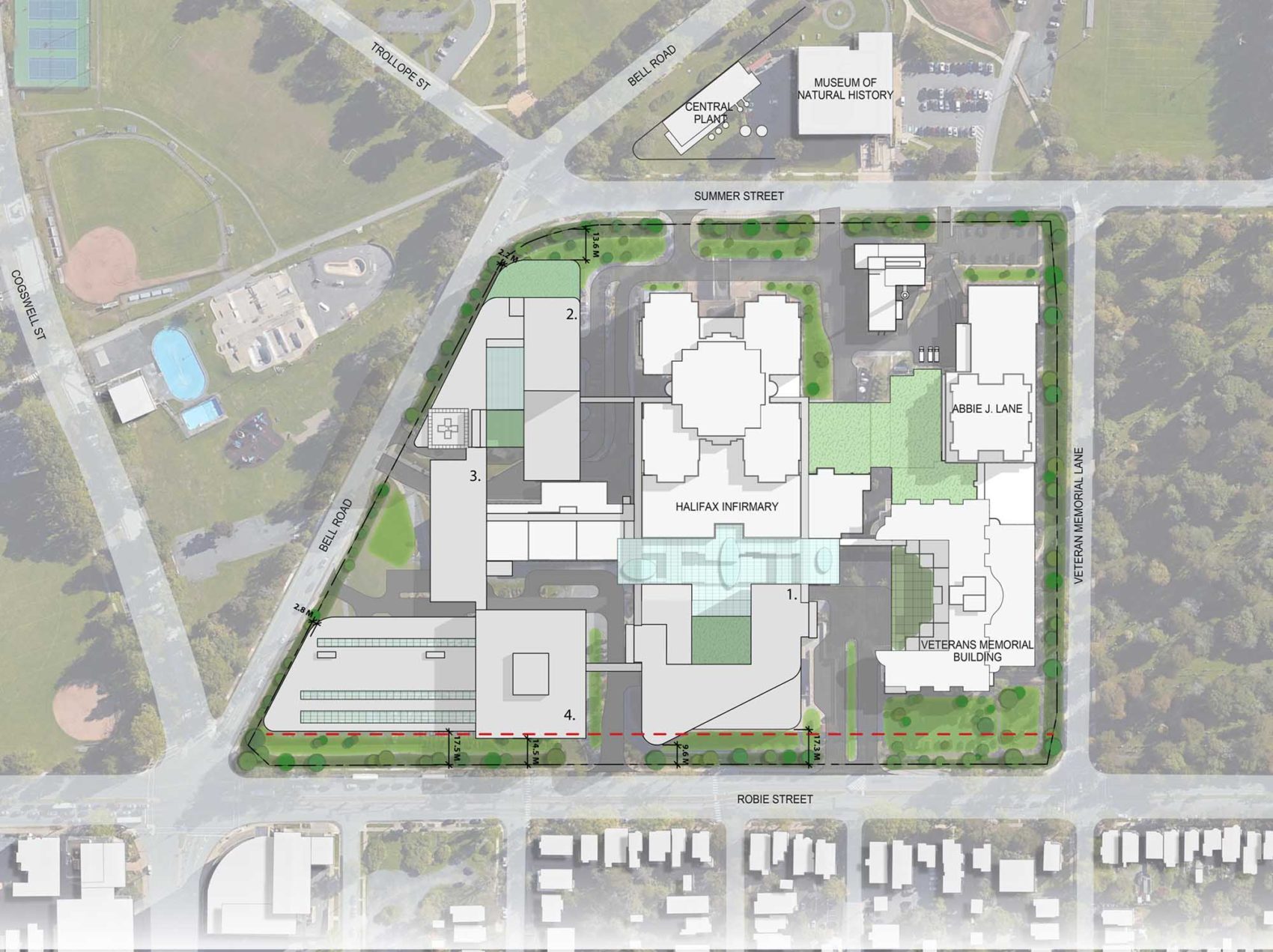
The Queen Elizabeth II (QEII) Health Sciences Centre is one of 17 Canadian academic health sciences networks. This multi-campus teaching and research organization located in downtown Halifax, Nova Scotia, comprises of two separate campuses – the ageing Victoria and Centennial Campus and the newer Halifax Infirmary.
Our clients, the Department of Transportation and Infrastructure Renewal (DTIR) and the Nova Scotia Health Authority (NSHA), sought to replace the ageing infrastructure of the Victoria and Centennial campuses with a series of new buildings at the Halifax Infirmary. Their goal was to better reflect the changing nature of health care delivery that had evolved to become more collaborative and team-based.
We were engaged to design a comprehensive new master plan for the 1.7 million square foot site – the largest infrastructure project in Nova Scotia’s history. Our work, which included functional programming, needed to ensure the master plan reflected the evolving clinical priorities and interdependencies across the care environment. We also had to consider the potential site redevelopment over the next 50 years.
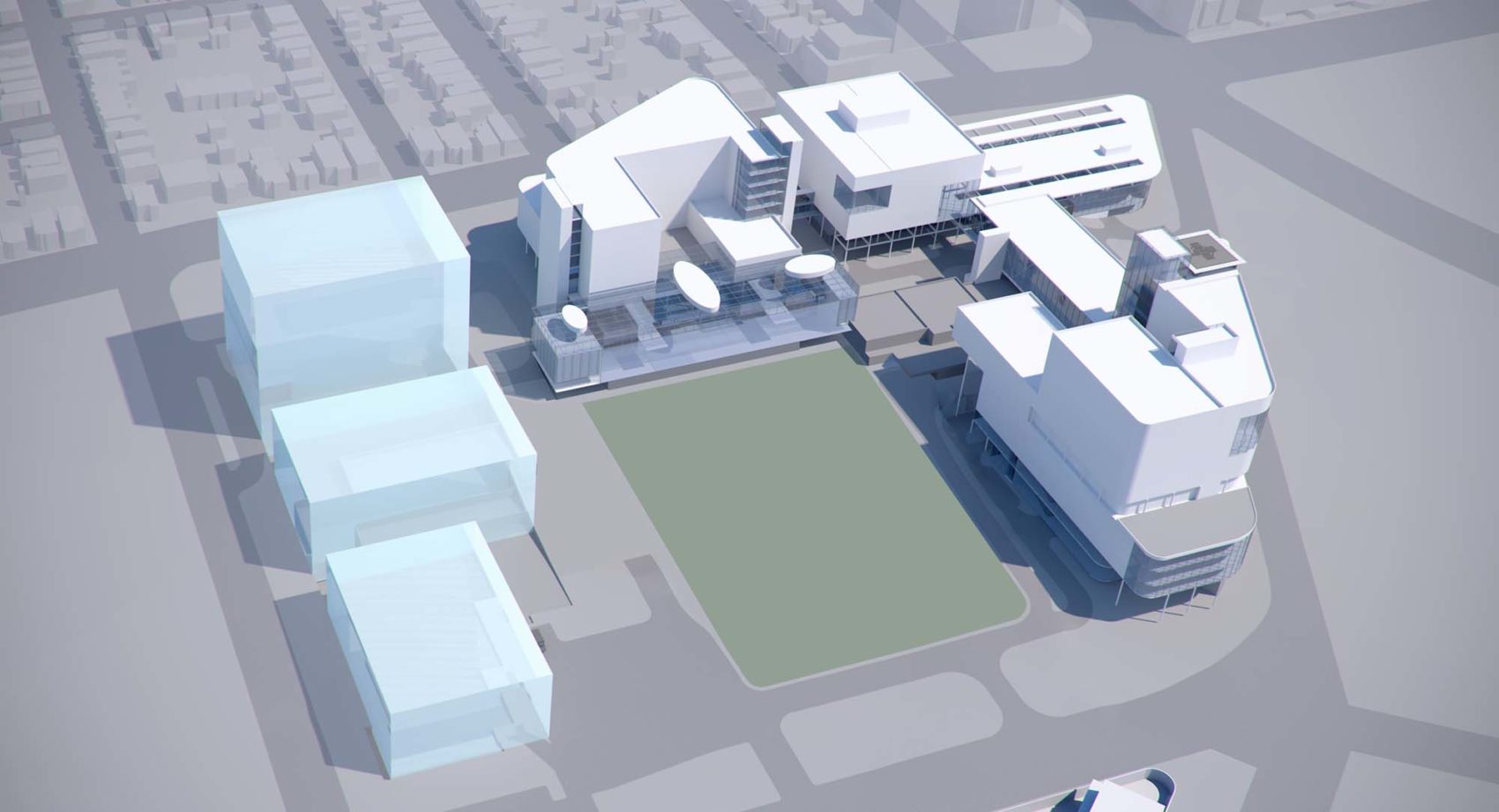
Previous attempts to develop a comprehensive master plan for the QE II Health Sciences Centre had not succeeded. Despite the urgency to relocate programs and services from one campus to another due to failing infrastructure, it was agreed that a measured, thoughtful and engaging collaborative process was the key to ensure stakeholder support for a rational, long-term site development plan.

CUSTOMER TESTIMONIAL
The visions that the architectural teams are coming up with are quite exciting. There’s a respect for the community and respect for environment, with more natural light to promote health and healing [1].”

Dr. David Kirkpatrick
Chief of Surgery for NHSA central zone and QEII HSC
Knowing that hospital staff may not be comfortable reviewing typical architectural drawings, our approach to exploring alternative master plan solutions needed to be simple, unintimidating and fun. In response, we developed a series of engaging charrette workshops using large 3-D foam core models to explore all the opportunities and constraints of each site.
These models allowed our master plan and healthcare team to cycle through multiple scenarios in real time with users to explore “what if” scenarios so that inevitable trade-offs could be understood by all who participated. Consequently, preferred solutions were “co-created”, eliminating the need to seek user “buy-in” altogether. This iterative process relocated 700,000 square-feet of operating rooms, intensive care units, inpatient units and ambulatory care clinics from one campus to another while meeting over 20 required guiding principles.

One of the most revealing implications of our approach to user group engagement was the degree of interest and understanding that our workshop charrettes produced for all stakeholders. For example, it was not uncommon for a nurse, or a logistics staff member, to interject and pick up a scaled model of the parking garage or the central utility plant and say, “Why can’t it be located here?”
After an initial round of charrette workshops with clinical and support services groups, DTIR leadership decided to invite the Deputy Ministers of Health and Wellness, Finance, and Infrastructure Renewal to attend our next master planning workshop. The intent was to use the workshop format to elevate the understanding for the scope and complexity of the project at a senior government level. This strategy was so successful, the Deputies decided that we should repeat the workshop with the relevant Ministers themselves.
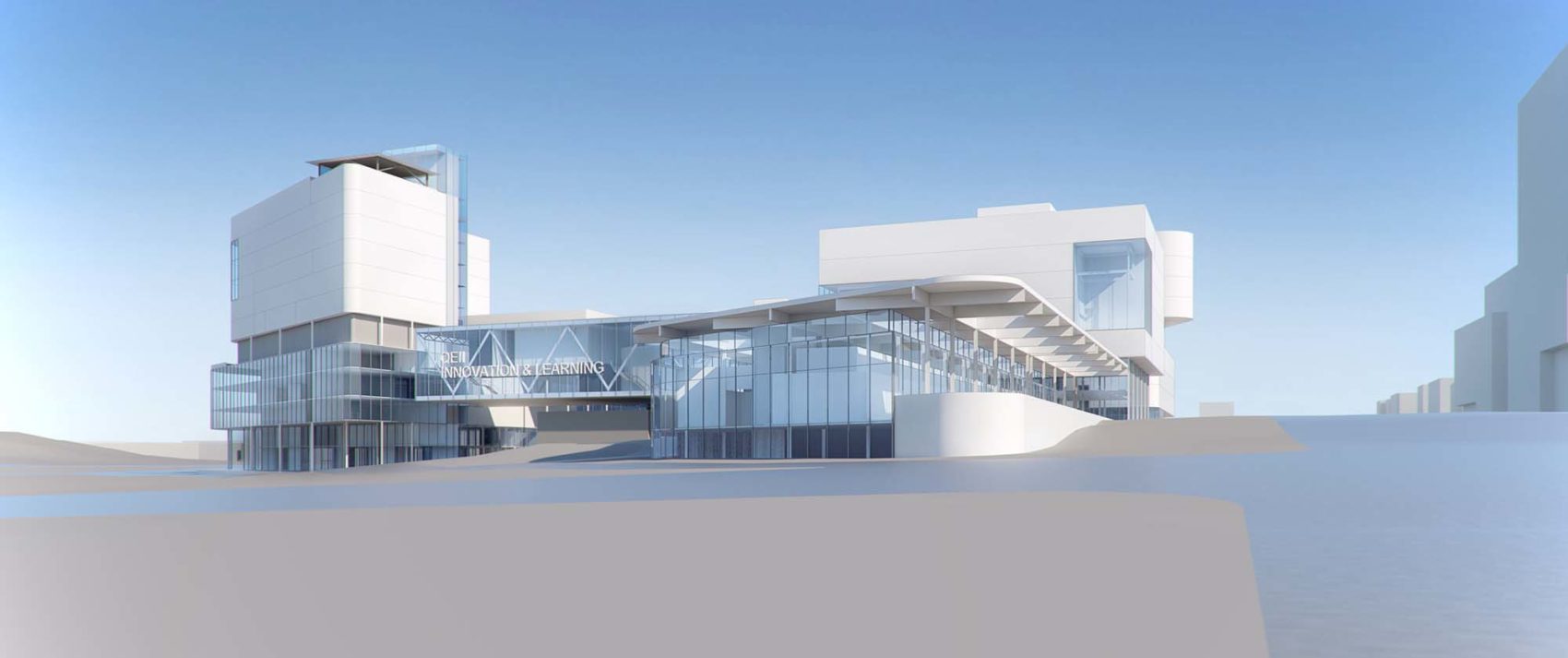

PROJECT INSIGHT
Master Planning is as much an art as it is a science. Working with diverse stakeholders is a challenge that requires both hard and soft skills to inspire the dreamers while considering the naysayers. In the end, the ‘ah-ha’ moments won the day.”

Ian Sinclair
Principal - VP Healthcare, National Healthcare Lead
The successful delivery of this project generated a renewed sense of confidence and excitement among government and health authority leaders – they could finally proceed to the next phase of procurement to make QEII’s redevelopment a reality.
The Master Plan provides a long-term road map for site development; a central enabler for the Province’s goal of providing “Connected Care for Nova Scotians.” The master plan and programming ensure that appropriate programs and services are provided in the right locations to achieve excellence in health, learning and research while attracting and retaining the top talent. Our work enables the Government of Nova Scotia to meet the healthcare needs and expectations of the people they serve for many years to come.
Footnotes:
EXPLORE MORE
We’d love to get to know you
Get in touch
"*" indicates required fields
Get in touch
Share

